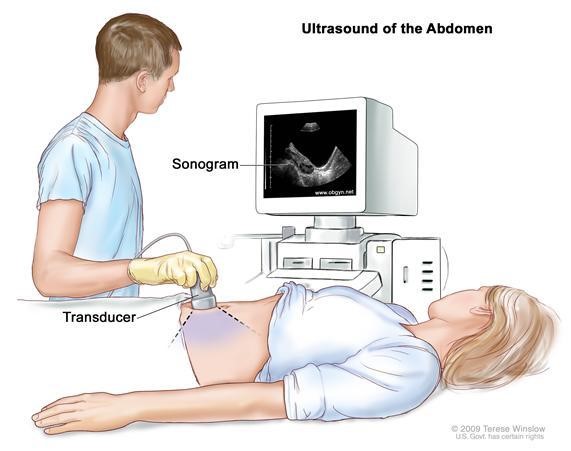A woman comes to the prenatal clinic suspecting that she is pregnant, and assessment reveals probable signs of pregnancy. Which findings would the nurse most likely assess? Select all that apply.
Ultrasound visualization of the fetus
Softening of the cervix
Positive pregnancy test
Absence of menstruation
Ballottement
Auscultation of a fetal heart beat
Correct Answer : B,C,D,E
Choice A Reason: This is incorrect because ultrasound visualization of the fetus is a positive sign of pregnancy, not a probable sign. A positive sign of pregnancy is a direct and definitive evidence of the presence of a fetus, such as fetal movement felt by the examiner or fetal heart sounds heard by a Doppler device.
Choice B Reason: This is correct because softening of the cervix, also known as Goodell's sign, is a probable sign of pregnancy. A probable sign of pregnancy is a strong indication of pregnancy based on physical changes in the reproductive organs, such as enlargement of the uterus or changes in the shape and consistency of the cervix.
Choice C Reason: This is correct because a positive pregnancy test, which detects human chorionic gonadotropin (hCG) in urine or blood, is a probable sign of pregnancy. However, it is not a conclusive sign, as hCG can also be produced by other conditions such as ectopic pregnancy, molar pregnancy, or trophoblastic tumors.
Choice D Reason: This is correct because absence of menstruation, also known as amenorrhea, is a probable sign of pregnancy. It occurs when ovulation and menstruation cease due to hormonal changes during pregnancy. However, it is not a definitive sign, as amenorrhea can also be caused by other factors such as stress, illness, or hormonal imbalances.
Choice E Reason: This is correct because ballottement, which is a rebounding of the fetus against the examiner's fingers during a pelvic examination, is a probable sign of pregnancy. It can be felt around 16 to 20 weeks of gestation.
Choice F Reason: This is incorrect because auscultation of a fetal heart beat, which can be heard by a fetoscope around 18 to 20 weeks of gestation or by a Doppler device around 10 to 12 weeks of gestation, is a positive sign of pregnancy, not a probable sign.
Nursing Test Bank
Naxlex Comprehensive Predictor Exams
Related Questions
Correct Answer is B
Explanation
Choice A Reason: Nagele's rule is a formula that estimates the due date by subtracting three months from the first day of the last menstrual period and adding seven days. However, this method assumes a regular 28-day cycle and may not be accurate for women with irregular cycles or who are unsure of their last menstrual period.
Choice B Reason: Ultrasound is the most accurate method of determining the estimated due date, especially in the first trimester. Ultrasound uses sound waves to create an image of the fetus and measure its size and development. Ultrasound can also detect any abnormalities or complications that may affect the pregnancy.
Choice C Reason: Gestation wheel is a circular calendar that estimates the due date by aligning the first day of the last menstrual period with a corresponding date on the wheel. However, this method also assumes a regular 28-day cycle and may not account for variations in ovulation or implantation.
Choice D Reason: Birth calculator is an online tool that estimates the due date based on various factors such as the last menstrual period, cycle length, ovulation date, conception date, or ultrasound date. However, this method may not be reliable as it depends on the accuracy of the input data and the algorithm used by the calculator.

Correct Answer is D
Explanation
Choice A Reason: This is incorrect because Ortolani's sign is a test for hip dysplasia in infants, not a sign of pregnancy. It involves moving the infant's legs to check for a clicking sound in the hip joint.
Choice B Reason: This is incorrect because Chadwick's sign is a bluish or purplish discoloration of the cervix, vagina, and vulva during pregnancy, not a softening of the lower uterine segment. It is caused by increased blood flow to the pelvic area.
Choice C Reason: This is incorrect because Goodell's sign is a softening of the cervix during pregnancy, not a softening of the lower uterine segment. It is caused by increased vascularity and edema of the cervical tissue.
Choice D Reason: This is correct because Hegar's sign is a softening of the lower uterine segment or isthmus during pregnancy. It can be felt by bimanual examination around six to twelve weeks of gestation.
Whether you are a student looking to ace your exams or a practicing nurse seeking to enhance your expertise , our nursing education contents will empower you with the confidence and competence to make a difference in the lives of patients and become a respected leader in the healthcare field.
Visit Naxlex, invest in your future and unlock endless possibilities with our unparalleled nursing education contents today
Report Wrong Answer on the Current Question
Do you disagree with the answer? If yes, what is your expected answer? Explain.
Kindly be descriptive with the issue you are facing.
